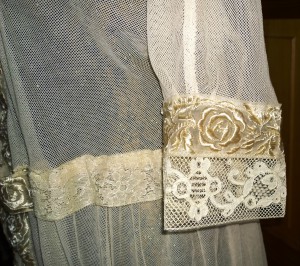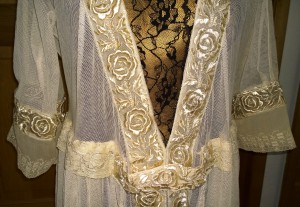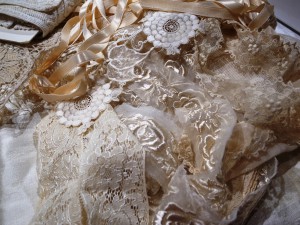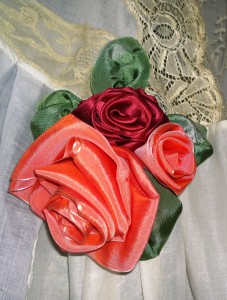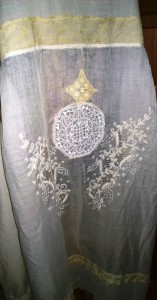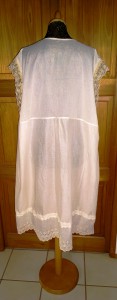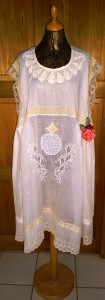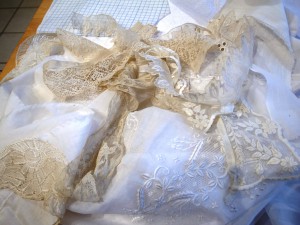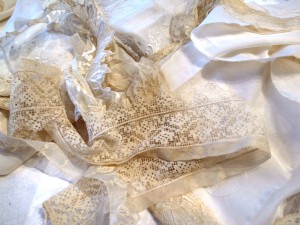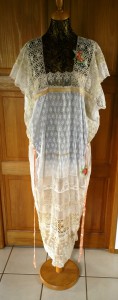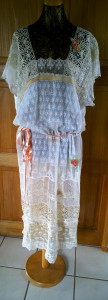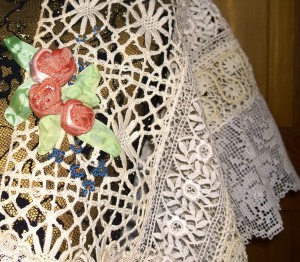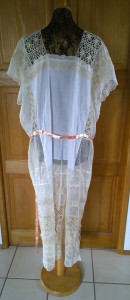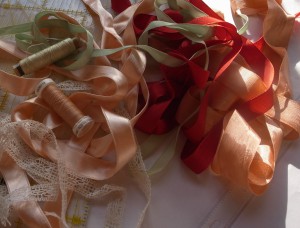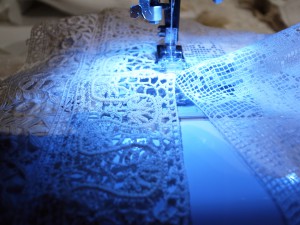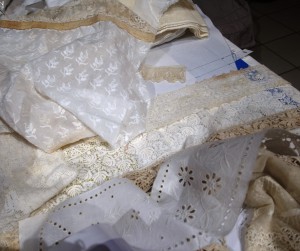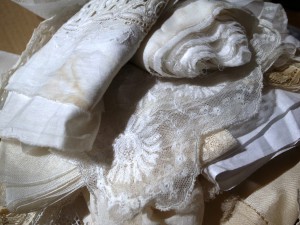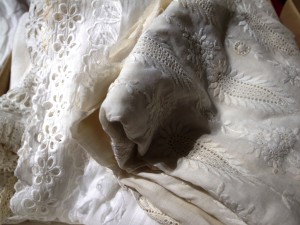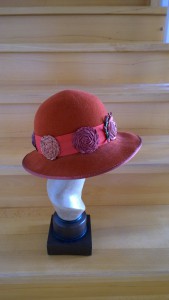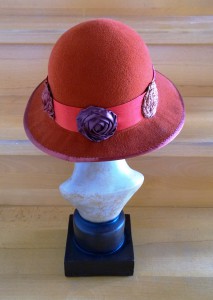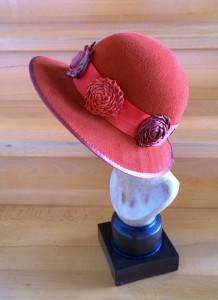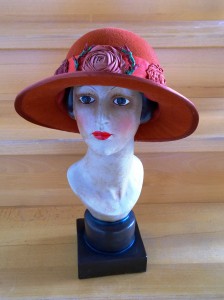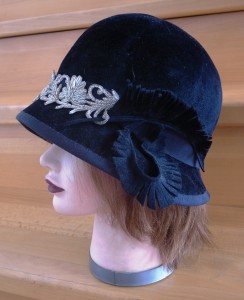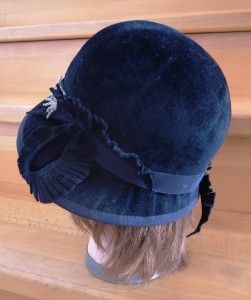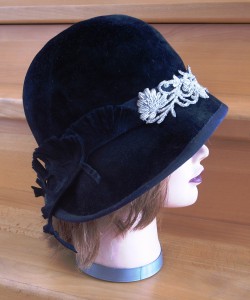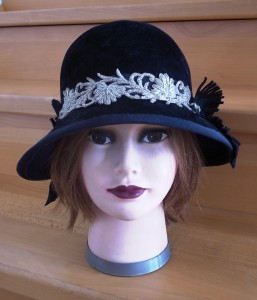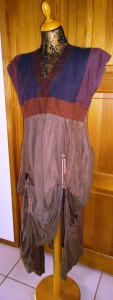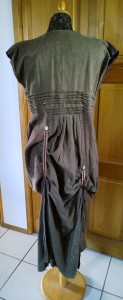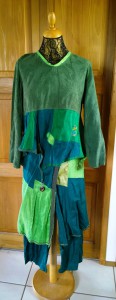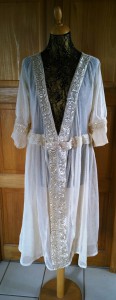

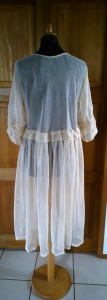 Done it! Gown no. 3 is finished! This time there is more resemblance to the vintage item, but I had to use much more modern fabric. I don´t posses some vintage batiste nor tulle, so I took new cotton net-lace The genuine gown from the Metropolitan Museum is real made of batiste, but I used this material on gown no. 2 and didn´t want to repeat it. The original gown is also much more embellished with embroideries, but contains no further decorations like roses, ribbons or other flowers. And the sleeves are much shorter, but I found this unflattering. For this project, I could use a long treasured, hand-embroidered silkborder, maybe genuine 1920s. The embroidery is in a very similar style to the orginal and looks really nobel. For the sleeves and the independent decoration in the middle of the front, I used the border-scraps and some perfect matching machine-embroidered crepe-silk….Happy end?
Done it! Gown no. 3 is finished! This time there is more resemblance to the vintage item, but I had to use much more modern fabric. I don´t posses some vintage batiste nor tulle, so I took new cotton net-lace The genuine gown from the Metropolitan Museum is real made of batiste, but I used this material on gown no. 2 and didn´t want to repeat it. The original gown is also much more embellished with embroideries, but contains no further decorations like roses, ribbons or other flowers. And the sleeves are much shorter, but I found this unflattering. For this project, I could use a long treasured, hand-embroidered silkborder, maybe genuine 1920s. The embroidery is in a very similar style to the orginal and looks really nobel. For the sleeves and the independent decoration in the middle of the front, I used the border-scraps and some perfect matching machine-embroidered crepe-silk….Happy end?
No way! I made a final fitting, took off the dress and in the silence of my room I heard a quiet ripping sound….Now, it seems, to use the perfect matching machine-embroidered crepe-silk wasn´t a good idea after all. The silk is brittle, but I hadn´t noticed it over washing, ironing and finally sewing. That ment cut off the seams, remove the crepe and find another half-way matching piece of lace, that´s not completely rotten. As you can see on the pictures, I succeeded. Delayed Happy End after all!